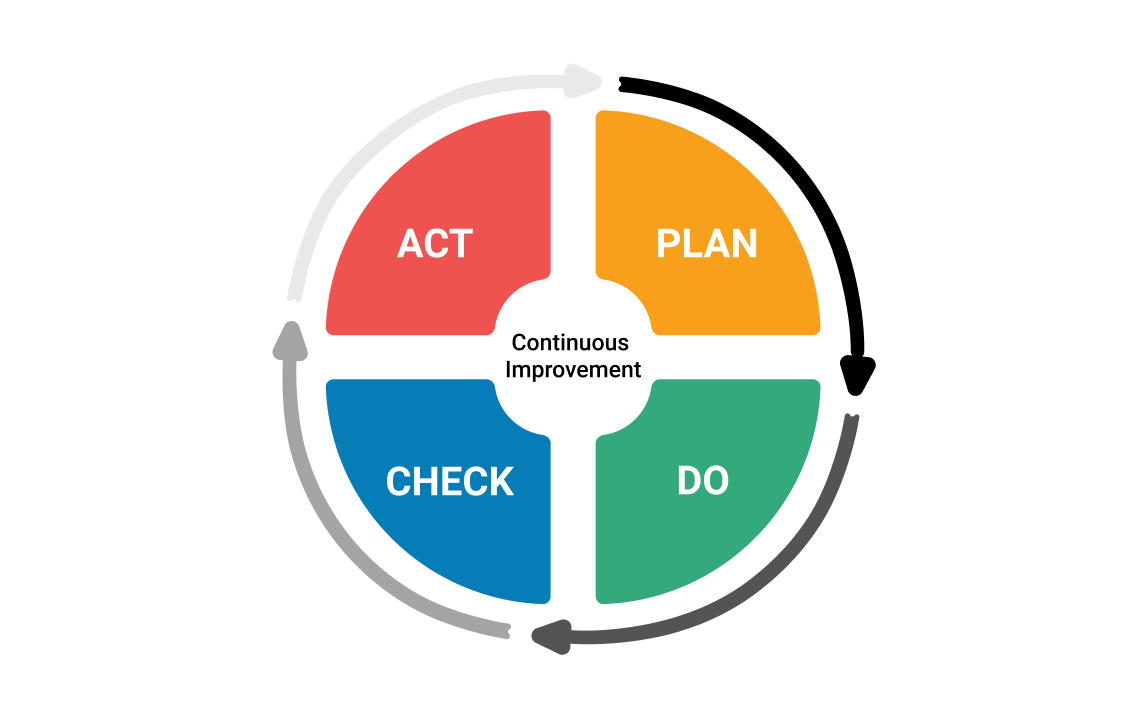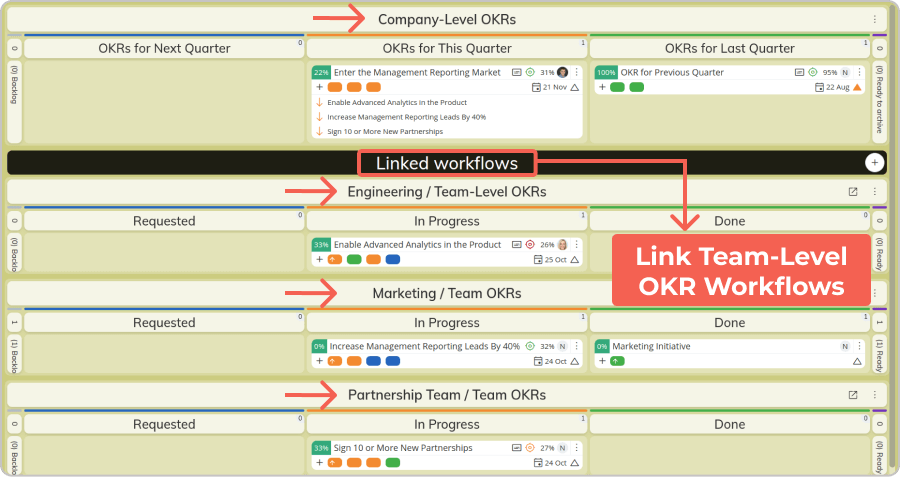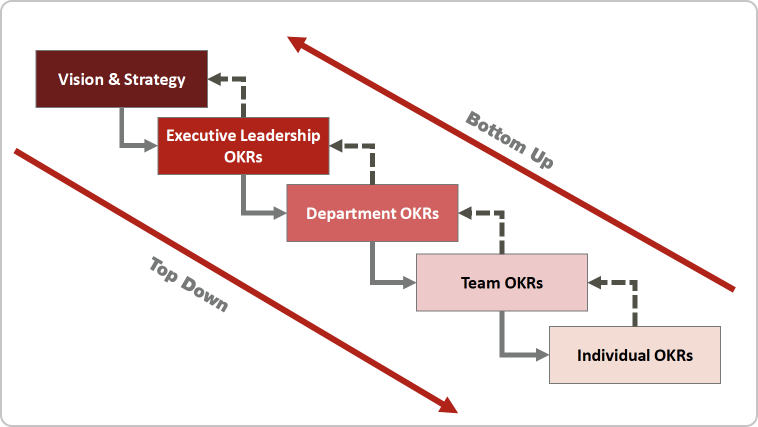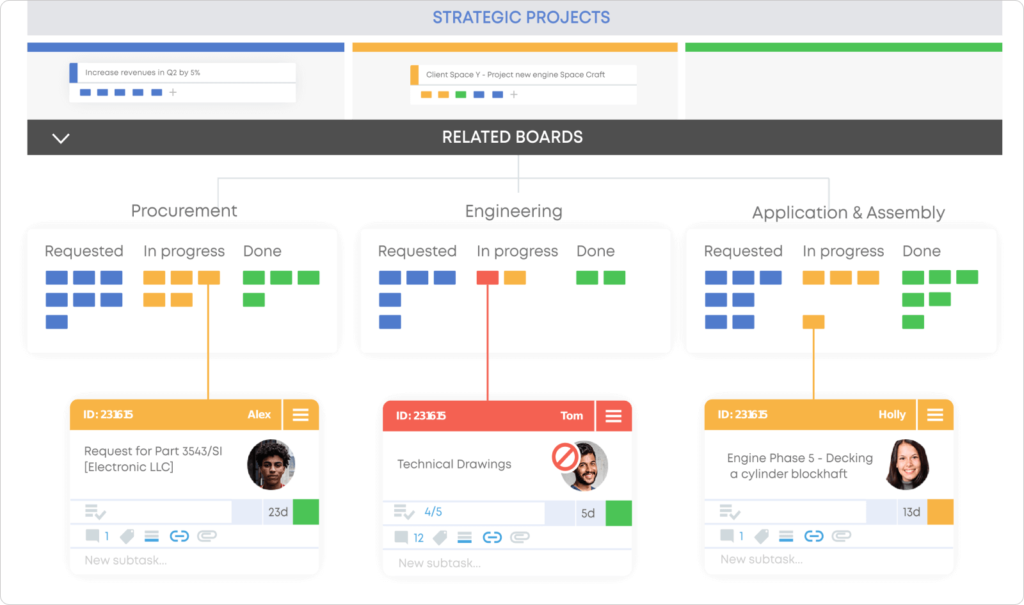Key Takeaways
OKRs (Objectives and Key Results) bring clarity, alignment, and measurable success to project management. When combined with project workflows, OKRs help teams stay focused on business impact, rather than just task completion. Whether you manage agile delivery or large project portfolios, integrating OKRs means connecting strategy with execution, improving transparency, and driving results.
What Is the Role of OKRs in Project Management?
OKRs translate company strategy into measurable goals that guide project execution. While project management ensures efficient delivery, OKRs clarify what outcomes matter most. This strategic framework helps prioritize initiatives and align projects with business objectives.
How do OKRs improve project focus and alignment with company goals?
OKRs clarify "why" teams are working on something, not just "what" they're building. They help project managers and teams identify initiatives that directly impact company goals. When OKRs are tied to delivery plans, every task contributes to a meaningful result.
What are the benefits of combining OKRs with project management?
-
Strategic clarity: Align every project with measurable business outcomes. In fact, according to recent research by Gartner, around 40% of executive leaders are not aligned on strategy execution - a gap that OKRs can help close by making goals transparent and measurable.
-
Focused execution: Filter out low-impact work and double down on what drives results.
-
Improved collaboration: Cross-functional teams share visibility into priorities and outcomes.
-
Faster adaptation: Regular OKR reviews create built-in checkpoints for reflection and redirection.
Combining OKRs with project management turns strategy into action. The problem often isn’t poor planning - it’s poor communication and misaligned delivery. OKRs bridge that gap by translating big-picture goals into initiatives that drive real business value.
What's the Difference Between OKRs and Traditional Project Management Goals?
Project goals often measure output (e.g., "launch feature X"), while OKRs measure outcome (e.g., "increase customer adoption by 20%"). OKRs go beyond deadlines and deliverables to track whether your projects are creating real business impact.
Avoid treating OKRs as a simple task list. For example:
❌ Incorrect Key Results:
- Send a "Welcome" email to all new customers
- Submit customer satisfaction survey
- Prepare a demo video
These are action items, not measurable outcomes.
✅ Better Key Results:
- Decrease response time from 2 hours to 1 hour
- Decrease customer onboarding time from 4 sessions to 2 sessions
- Customer support tickets are solved in 2 days
These metrics reflect real progress toward delighting customers.
How do OKRs help in tracking project progress and measuring success?
Traditional task checklists often miss the bigger picture. OKRs shift the focus to outcomes. By setting measurable key results, teams track real business value - like improving delivery times or reducing budget variance - rather than just ticking off project steps.
How can OKRs be integrated with Agile project management methodologies?
OKRs pair naturally with Agile. Sprints become vehicles for delivering key results. Agile cadences (like retros and stand-ups) can include OKR reviews. Agile teams can utilize OKRs to focus on value through continuous improvement and feedback, rather than just velocity.
 Stages of the Plan-Do-Check-Act (PDCA) model
Stages of the Plan-Do-Check-Act (PDCA) model
Real Examples: Project Management OKRs
No matter the team or department, nearly every business activity involves some form of project execution - be it launching features, fulfilling orders, or running marketing campaigns. That’s why OKRs are such a natural fit for project management.
Whether you're leading a product team or managing a Project Management Office (PMO), OKRs help connect strategic intent with real delivery. Below are practical OKR examples tailored to common project-focused goals.
»» Objective: Release value faster to customers
-
KR1: Improve project lead time by 20%
-
KR2: Keep engineering flow efficiency above 40%
-
KR3: Use MVPs to gather early customer feedback
»» Objective: Improve cross-team collaboration
-
KR1: Complete 90% of shared initiatives across departments
-
KR2: Cut project handoff delays by 30%
-
KR3: Hold bi-weekly OKR alignment reviews
How Two of The Largest Organizations in the World Save Time & Money with OKRs?
Best Practices on Setting Effective OKRs in Project Management
-
Make outcomes measurable: Avoid action-item key results.
-
Align vertically and horizontally: Tie team OKRs to departmental or company goals.
-
Update regularly: Review OKRs alongside sprint planning or milestone check-ins.
-
Limit the number: Focus on 1–3 high-impact objectives per quarter.
How to Align Project Tasks with OKRs Effectively
- Start with quarterly company OKRs tied to your strategic vision.
- Cascade objectives to departments and individual teams.
- Break down key results into project-level initiatives.
- Map initiatives to deliverables on your project board.
- Use visual tools (e.g., Kanban boards, goal trees) to make connections clear.
- Track real-time progress using dashboards.
- Use weekly check-ins or reviews to update OKRs.
- Review and adjust objectives regularly to stay aligned.

Connecting team-level OKRs with projects and delivery processes
How to Cascade OKRs from Strategic Vision to Project Execution
-
Company-level OKRs define the "why."
-
Department OKRs interpret the impact per function.
-
Team OKRs reflect tactical execution.
-
Projects and tasks are what make it all happen.
 Creating OKRs across different organizational levels. Image Credit: People Stretch Solutions
Creating OKRs across different organizational levels. Image Credit: People Stretch Solutions
For instance, say your Engineering department has an objective to "Improve product quality." A related key result might be "Reduce bugs by 30%." To deliver on this, a project like refactoring core software modules could be initiated, supported by sprint-level tasks such as "optimize database queries" or "update test coverage."
In larger organizations, OKRs can span multiple teams. Each team may own a different key result under a shared objective, ensuring collective accountability and coordinated delivery. Regular OKR check-ins at each layer reinforce strategic focus and delivery cadence.
 Cross-team dependencies in project management
Cross-team dependencies in project management
How can OKRs boost employee engagement?
OKRs give teams purpose. When individuals see how their work contributes to strategic outcomes, motivation increases. OKRs also promote autonomy - teams choose how they'll achieve the results.
How do OKRs facilitate collaboration within project teams?
With shared OKRs, everyone sees the same finish line. Whether through Kanban boards or OKR dashboards, project managers can visualize dependencies, track shared goals, and align stakeholders across departments.
How often should OKRs be reviewed and updated during projects?
-
Weekly: Light check-ins for progress updates.
-
Bi-weekly/monthly: In-depth reviews tied to sprint planning.
-
Quarterly: Full OKR evaluation and refresh.
What tools help manage OKRs alongside project execution?
Many OKR platforms now offer native project management features or seamless integrations:
-
Businessmap: Connects OKRs with Kanban workflows and project delivery.
-
Celoxis: Connects OKRs with project portfolios, team goals, and real-time performance tracking through integrated dashboards.
-
Asana: Project-first platform with integrated OKR tracking.
-
Profit.co: Built-in KPIs, checklists, and real-time updates for OKR-linked tasks.
Businessmap is the most flexible software
to align work with company goals
In Summary
Combining OKRs with project management can enable you to align your strategic goals with their delivery and ensure that you execute the most important business priorities. To do this in practice, you can:
- Cascade your OKRs to build a link between your goals and actual projects/initiatives
- Visualize the flow of both your OKRs and delivery processes
- Keep everyone aligned through various feedback loops across the company





 Stages of the Plan-Do-Check-Act (PDCA) model
Stages of the Plan-Do-Check-Act (PDCA) model

 Creating OKRs across different organizational levels. Image Credit:
Creating OKRs across different organizational levels. Image Credit:  Cross-team dependencies in project management
Cross-team dependencies in project management

